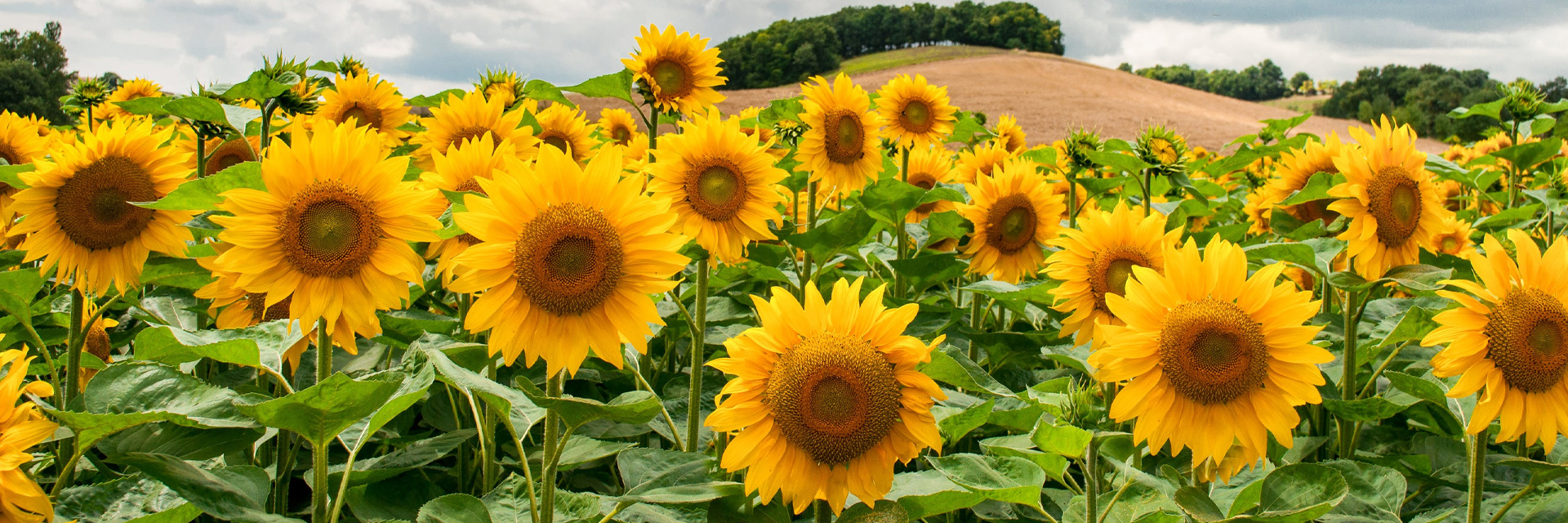Some plants can withstand the heat of direct sunlight more than others, but most those so-called ‘sunlight plants’ (whether they are classified as vegetables or ornamentals), need their fair share of shade from sunlight too. Being under the hot sun is hard enough for us people to tolerate so just imagine how plants undergo much stress being left out on the sun all day. It does help how they are made up of 85% of water, but when the mercury hits its peak, these plants also wither, dry, and grow thirsty.
Let’s get to know more of these ‘sunlight plants’ and what we can do to protect them from rising temperatures.
1. Summer Perennials


Full Sun Perennials such as miniature roses, coneflowers, or shasta daisies, grow well under direct sunlight and can be resilient to changing climates. You can easily grow them in containers and are pretty much low maintenance.
However, similar perennials that fully bloom during the summer season such as asters, sedums, chrysanthemums, or daylilies may need extra water and at times shade nets, especially when the temperature reaches to around 32℃. You may not be able to notice that your plants are already having a hard time but you’ll still need to water them regularly no matter how they may seem tolerant of heat.
Now, if you’re planning to plant your perennials in smaller containers from pots so you could hang them in your balcony for some great sunlight access, loosen their roots first and spread them out while firming the soil. This will ensure that they won’t grow thirsty during hotter days. Another pro tip, placing mulch over the soil will retain moisture longer!
2. Cool Climate Perennials


Taking care of such ornamentals as oriental poppies, bleeding hearts, or blue stars can be much more difficult during summer as they don’t really do too well to too much heat. These flowering sunlight plants do all their growing processes way early during colder weather so that they have a bigger chance to survive when hotter days come in, so you’d have to help them cope with the weather. Most of these die after blooming and sort of hibernate until the hot days are over.
This is when you’ll need some quality shade nets to keep them off sunlight for awhile, regulate the temperature, and prevent them from having those gangly appearances after drying up. Aside from setting up shade nets right on your plants’ foliages, remove worn out stems that have finished flowering and trim foliages that don’t seem well and healthy. Again mulch becomes your friend here as they can keep the soil cool and trap in water so they won’t dry up easily.
3. Annuals


Growing annuals (whether from seed to transplants), certainly requires some skill. Not planting them the right way can mess up their foliage and eventually how they blossom on full display, or worse, they might not get the proper nourishment they need to grow at all.
Annuals such as sunflowers, balsam, or marigolds can be sowed directly from your garden soil but others like gazanias, pansies, or sweet peas have their own type of tender loving care. What you can do is try reviewing how your annuals would thrive in every possible space within your garden– both for areas that permit more sunlight or otherwise. Placing shade nets in your heat-hating plants like pansies, sweet peas, petunias, and snapdragons will help them acclimate to their very own garden space all year round.
If you choose to grow your annuals in pots, the more you’ll need your shade nets to protect them from the sun’s heat which can really be deadly for them quickly. Make sure you water them regularly as well while ensuring that their root balls get moistened properly. Slow-release organic fertilizers can help prevent moisture from taking away the soil’s nutrients and cutting off spent blooms and stems will signal your plants that it’s okay for them to bloom again.
4. Vegetables


While vegetables like tomatoes, peppers, corn, or eggplant are resilient to higher temperatures, too much heat and lack of water won’t survive for long. Science will tell you that your vegetable sunlight plants will even need around 32℃ of heat to grow abundantly but on hotter days, they slow down to store their energies so they can take in the heat’s punishing effects. Be very wary to spot if they are thirsty and water them well while placing them under shade nets during hotter days because they easily get thirsty. Tomatoes for example need over 30 gallons of water throughout the season.
Now, you may notice a slight change in appearance in your vegetables throughout the day as they perk up when temperatures fall in the evenings. Placing mulch on top of the soil and using drips or soakers will help them retain moisture and keep them well hydrated throughout the day.


If you’re looking for affordable yet high-quality shade nets for your plants, check out the many varieties that Philippine Ranging Nets has to offer. Send them a message via [email protected] or call +63977 007 0228 for convenient order placements.




